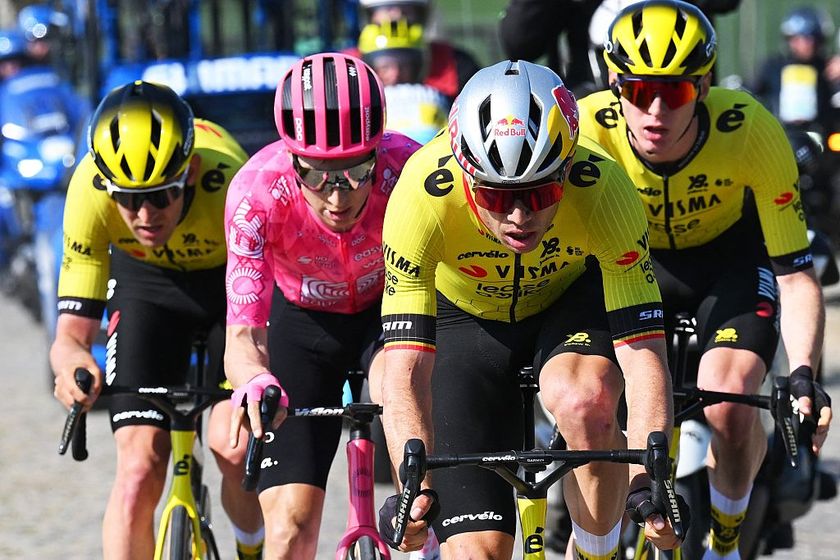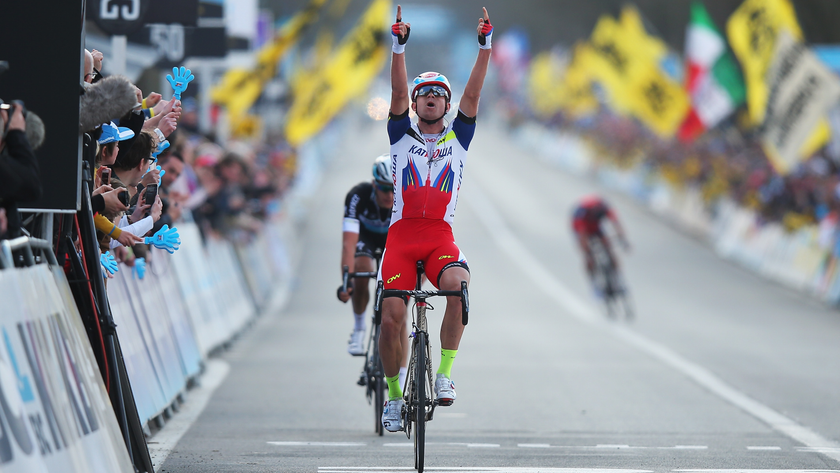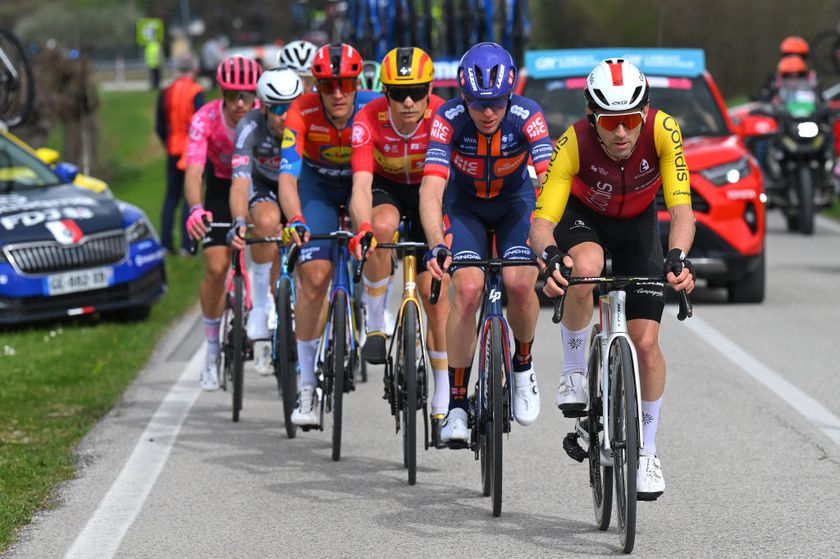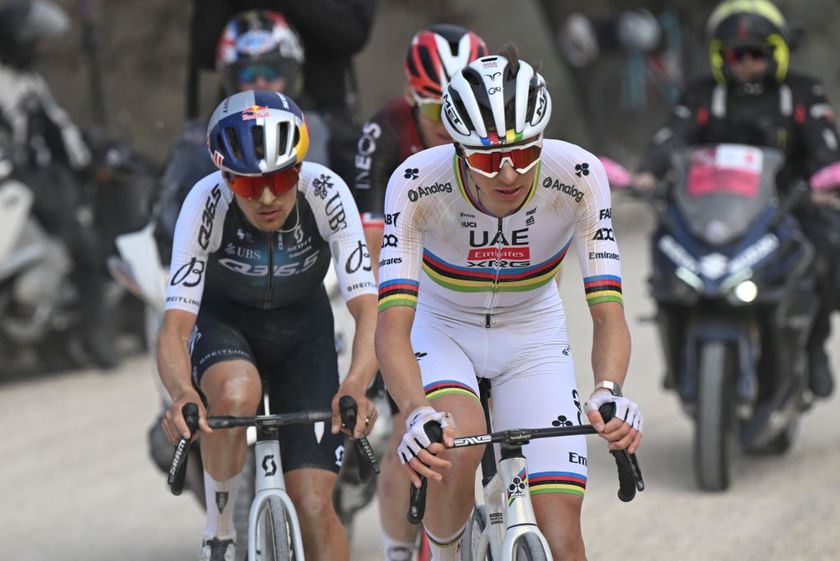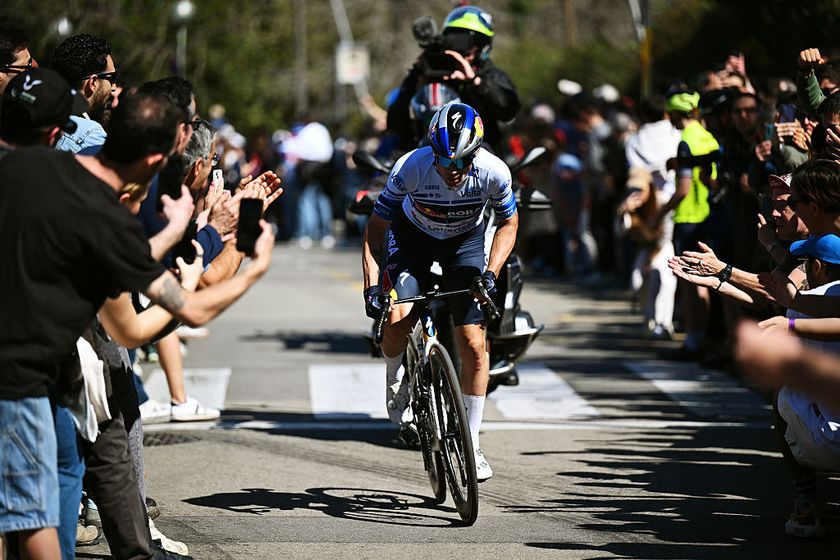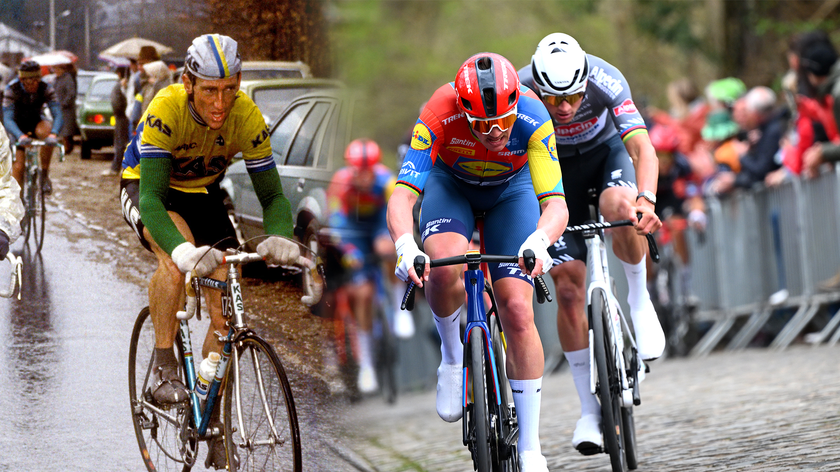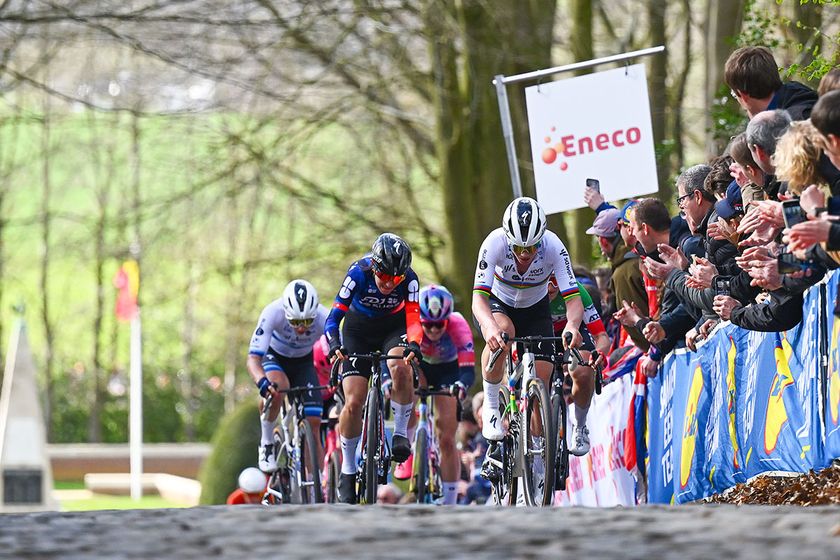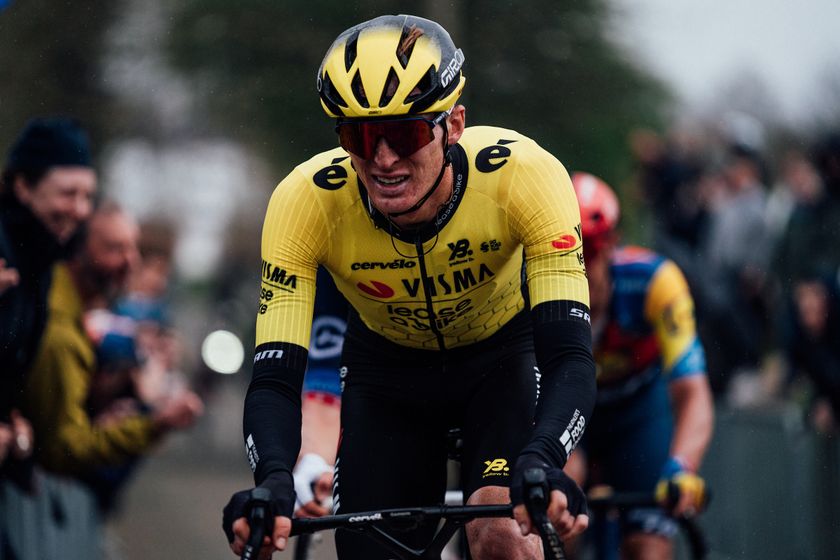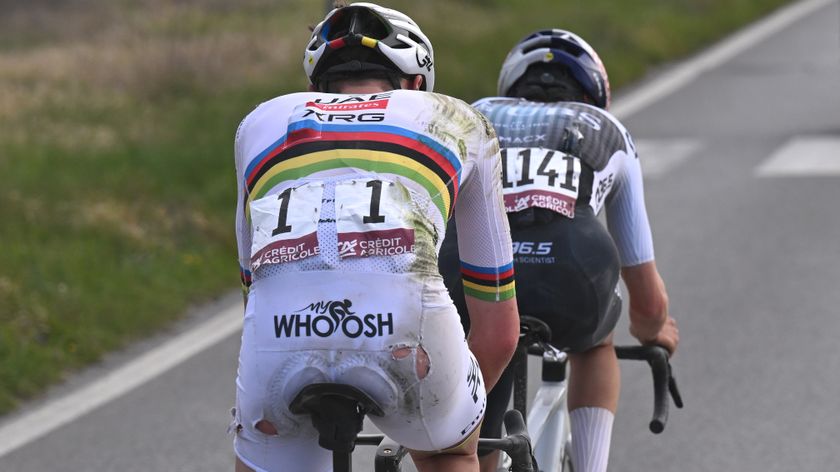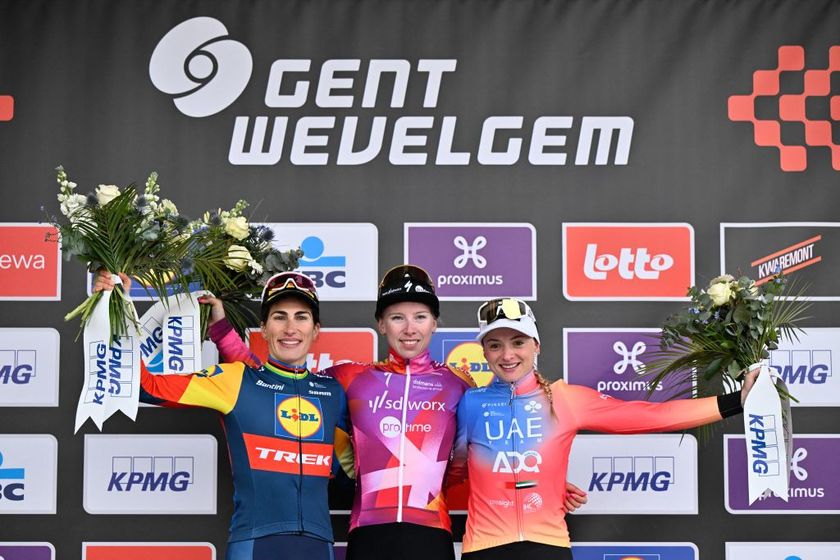Fitness questions and answers for August 14
Got a question about fitness, training, recovery from injury or a related subject? Drop us a line at...
Form & Fitness Q & A
Got a question about fitness, training, recovery from injury or a related subject? Drop us a line at fitness@cyclingnews.com. Please include as much information about yourself as possible, including your age, sex, and type of racing or riding. Due to the volume of questions we receive, we regret that we are unable to answer them all.
Carrie Cheadle, MA (www.carriecheadle.com) is a Sports Psychology consultant who has dedicated her career to helping athletes of all ages and abilities perform to their potential. Carrie specialises in working with cyclists, in disciplines ranging from track racing to mountain biking. She holds a bachelors degree in Psychology from Sonoma State University as well as a masters degree in Sport Psychology from John F. Kennedy University.
Dave Palese (www.davepalese.com) is a USA Cycling licensed coach and masters' class road racer with 16 years' race experience. He coaches racers and riders of all abilities from his home in southern Maine, USA, where he lives with his wife Sheryl, daughter Molly, and two cats, Miranda and Mu-Mu.
Kelby Bethards, MD received a Bachelor of Science in Electrical Engineering from Iowa State University (1994) before obtaining an M.D. from the University of Iowa College of Medicine in 2000. Has been a racing cyclist 'on and off' for 20 years, and when time allows, he races Cat 3 and 35+. He is a team physician for two local Ft Collins, CO, teams, and currently works Family Practice in multiple settings: rural, urgent care, inpatient and the like.
Fiona Lockhart (www.trainright.com) is a USA Cycling Expert Coach, and holds certifications from USA Weightlifting (Sports Performance Coach), the National Strength and Conditioning Association (Certified Strength and Conditioning Coach), and the National Academy for Sports Nutrition (Primary Sports Nutritionist). She is the Sports Science Editor for Carmichael Training Systems, and has been working in the strength and conditioning and endurance sports fields for over 10 years; she's also a competitive mountain biker.
Eddie Monnier (www.velo-fit.com) is a USA Cycling certified Elite Coach and a Category II racer. He holds undergraduate degrees in anthropology (with departmental honors) and philosophy from Emory University and an MBA from The Wharton School of Business.
Eddie is a proponent of training with power. He coaches cyclists (track, road and mountain bike) of all abilities and with wide ranging goals (with and without power meters). He uses internet tools to coach riders from any geography.
Get The Leadout Newsletter
The latest race content, interviews, features, reviews and expert buying guides, direct to your inbox!
David Fleckenstein, MPT (www.physiopt.com) is a physical therapist practicing in Boise, ID. His clients have included World and U.S. champions, Olympic athletes and numerous professional athletes. He received his B.S. in Biology/Genetics from Penn State and his Master's degree in Physical Therapy from Emory University. He specializes in manual medicine treatment and specific retraining of spine and joint stabilization musculature. He is a former Cat I road racer and Expert mountain biker.
Since 1986 Steve Hogg (www.cyclefitcentre.com) has owned and operated Pedal Pushers, a cycle shop specialising in rider positioning and custom bicycles. In that time he has positioned riders from all cycling disciplines and of all levels of ability with every concievable cycling problem.They include World and National champions at one end of the performance spectrum to amputees and people with disabilities at the other end.
Current riders that Steve has positioned include Davitamon-Lotto's Nick Gates, Discovery's Hayden Roulston, National Road Series champion, Jessica Ridder and National and State Time Trial champion, Peter Milostic.
Pamela Hinton has a bachelor's degree in Molecular Biology and a doctoral degree in Nutritional Sciences, both from the University of Wisconsin-Madison. She did postdoctoral training at Cornell University and is now an assistant professor of Nutritional Sciences at the University of Missouri-Columbia where she studies the effects of iron deficiency on adaptations to endurance training and the consequences of exercise-associated changes in menstrual function on bone health.
Pam was an All-American in track while at the UW. She started cycling competitively in 2003 and is the defending Missouri State Road Champion. Pam writes a nutrition column for Giana Roberge's Team Speed Queen Newsletter.
Dario Fredrick (www.wholeathlete.com) is an exercise physiologist and head coach for Whole Athlete™. He is a former category 1 & semi-pro MTB racer. Dario holds a masters degree in exercise science and a bachelors in sport psychology.
Scott Saifer (www.wenzelcoaching.com) has a Masters Degree in exercise physiology and sports psychology and has personally coached over 300 athletes of all levels in his 10 years of coaching with Wenzel Coaching.
Kendra Wenzel (www.wenzelcoaching.com) is a head coach with Wenzel Coaching with 17 years of racing and coaching experience and is coauthor of the book Bike Racing 101.
Steve Owens (www.coloradopremiertraining.com) is a USA Cycling certified coach, exercise physiologist and owner of Colorado Premier Training. Steve has worked with both the United States Olympic Committee and Guatemalan Olympic Committee as an Exercise Physiologist. He holds a B.S. in Exercise & Sports Science and currently works with multiple national champions, professionals and World Cup level cyclists.
Through his highly customized online training format, Steve and his handpicked team of coaches at Colorado Premier Training work with cyclists and multisport athletes around the world.
Brett Aitken (www.cycle2max.com) is a Sydney Olympic gold medalist. Born in Adelaide, Australia in 1971, Brett got into cycling through the cult sport of cycle speedway before crossing over into road and track racing. Since winning Olympic gold in the Madison with Scott McGrory, Brett has been working on his coaching business and his www.cycle2max.com website.
Richard Stern (www.cyclecoach.com) is Head Coach of Richard Stern Training, a Level 3 Coach with the Association of British Cycling Coaches, a Sports Scientist, and a writer. He has been professionally coaching cyclists and triathletes since 1998 at all levels from professional to recreational. He is a leading expert in coaching with power output and all power meters. Richard has been a competitive cyclist for 20 years
Andy Bloomer (www.cyclecoach.com) is an Associate Coach and sport scientist with Richard Stern Training. He is a member of the Association of British Cycling Coaches (ABCC) and a member of the British Association of Sport and Exercise Sciences (BASES). In his role as Exercise Physiologist at Staffordshire University Sports Performance Centre, he has conducted physiological testing and offered training and coaching advice to athletes from all sports for the past 4 years. Andy has been a competitive cyclist for many years.
Michael Smartt (www.cyclecoach.com) is an Associate Coach with Richard Stern Training. He holds a Masters degree in exercise physiology and is USA Cycling Expert Coach. Michael has been a competitive cyclist for over 10 years and has experience coaching road and off-road cyclists, triathletes and Paralympians.
Kim Morrow (www.elitefitcoach.com) has competed as a Professional Cyclist and Triathlete, is a certified USA Cycling Elite Coach, a 4-time U.S. Masters National Road Race Champion, and a Fitness Professional.
Her coaching group, eliteFITcoach, is based out of the Southeastern United States, although they coach athletes across North America. Kim also owns MyEnduranceCoach.com, a resource for cyclists, multisport athletes & endurance coaches around the globe, specializing in helping cycling and multisport athletes find a coach.
Why testosterone?
Cramp
Favoring the right side
Knee pain
Hot Spots and Wedges
Pelvic asymmetry
More on bars
Why testosterone?
All the testosterone doping dialogue seems to revolve around ratios, test methods, etc. There is a noticeable silence in these public forums re: a candid explanation about why an elite cyclist might use synthetic testosterone--meanwhile Landis repeatedly points out the futility of intermittent or event-specific dosing. I have heard from competitive cyclists that it is commonplace to use testosterone patches the night after racing to accelerate muscle recovery. Could this be a simpler and more obvious explanation for the presence of exogenous testosterone in the A and B samples after stage 17? Is this practise and application commonplace? Does it work?
Philip Sheridan
Kelby Bethards replies:
I am writing this without much knowledge of how to use the drugs for doping or research into such things. Call that unfortunate, or fortunate, depending on the circumstance. I probably will get a bunch of email toward my incompetence, but I'll give it a whirl. They just don't teach us the usage of drugs for illegal sports reasons in med school or residency.
Cramp
I wonder if you can help. I find that I am susceptible to cramp in my legs on longer or harder rides. Some sources say that a shortage of salt and electrolytes can lead to cramp (others say it has no effect) so I have upped my intake. This does not seem to have made a difference. What else can I do to reduce the risk of cramp?
Neil Crofts
Scott Saifer replies:
Here's the text of a handout from Wenzel Coaching on some causes and cures of cramping in cyclists. I hope one or more of the ideas in it is helpful.
Favoring the right side
Being an asymmetrical rider myself and favouring my right side, I always find Steve's bike fit questions concerning asymmetry fairly interesting. In a link to an article on his website, he states that 95% of riders favour their right side, independent upon whether they typically favour their left or right hand in other matters. He hypothesizes that society favours left brain thinking and since the left brain controls the right side and that riding a bike is a left brain activity, that will cause the favouring of the right side.
Now I am an electrical engineer, not a medical professional, but I gave this some thought after pushing hard through an interval last night. My hands were not symmetrical on the handlebars. My left hand was half on the hood, half on the tape behind the hood but my right hand was ready to shift the rear derailleur (Campy Record 10-speed). As cyclists, we don't shift chainrings that often but shift our rear derailleur quite frequently. Even when not shifting, our hand is ready to shift causing an asymmetric position on the handlebars that I believe translates to dipping the right hip and pointing the right foot outwards more than the left foot.
What do you think? I am now going to concentrate on keeping my hands in the same position and see if that makes a difference.
Dan Steinbach
Steve Hogg replies:
I'm not an a health professional either so don't worry about it. I can't guarantee the correctness of my hypothesis but can guarantee that the right side bias is out there amongst cyclists
Knee pain
A personal limiting factor for me for many years has been my knees. I'm 56 and ride a road bike mainly to stay fit. When I am physically tasked riding up hills it feels like the muscles around both knees are burning just like your thigh muscles might feel when they burn. As soon as I transition to a lesser slope or a flat where I can "rest" the burning disappears. The pain isn't disabling but primarily uncomfortable. I have no other knee problems and no pain that persists when I am off the bike. If you have an explanation and a training regimen that would help mitigate this condition, I would appreciate your response.
Steve Murphy
Steve Hogg replies:
Are you sure that your seat isn't too low?
Steve Murphy responded:
I re-measured my seat height and it was right on .883 x inseam. I raised 5mm and I will get back to you with my experimentation results.
Steve Hogg replies:
The 0.883 has never had any credibility and so is a largely irrelevant relationship. There are too many other variables to consider.
Pelvic asymmetry #1
I've enjoyed reading your articles on the website as well as the letters and articles on cyclingnews.com. I am a USA Cycling Level II coach. One of my athletes is a young talented guy riding in Denmark for the summer. He turned me on to your articles, especially the one on pelvic asymmetry. He suffers from a left hip rolled down and pelvis twisted left (i.e. right hip closer to the handlebars) configuration. The idea of using the K-force seatpost sounds great! What was particularly exciting is that I too suffer from a left hip down problem. My difference is that my pelvis is twisted rightward (i.e. left hip is closer to the handlebars; left knee closer to the top tube than the right). In both of our cases, we tend to worsen this as the miles accumulate during the race season.
I have thought about the appropriate direction to shift the saddle on the K-force post. The trouble is I've thought about it way too much and have thoroughly confused myself. My question is this: In both of our cases, is the goal to shift the seat leftward thus bringing the left ischium back on top of the saddle or is it to shift the seat rightward extending the reach of the relatively under-extended left leg (but leaving the left ischium rolled off the side still perhaps)? Also what about the twisted pelvis? Is there any role in rotating the seatpost? Again, if you do rotate the seatpost are you trying to twist the pelvis back in line or are you trying to accommodate the twist of the pelvis?
For both of us, the article describes what may be Shangri-la in terms of bike fit. The whole issue makes me, at least, feel very odd on the bike. Trouble is, I am feeling the oddest when I am my fittest. Undoubtedly, more diligent stretching would help.
Thanks for any help you can give me.
Joshua G. Barton, MD
Steve Hogg replies:
Your last and second last lines are telling. If you tend to noticeable asymmetries of function and "I am feeling the oddest when I am my fittest. Undoubtedly more diligent stretching would help." You feel odd at the point of max fitness because you are considering fitness as cardiovascular efficiency and muscular strength. That is a poor and incomplete definition of fitness. You and your athletes problems don't stem from having well developed lungs and legs. They stem from poor structural fitness which means in turn that neurological fitness is probably compromised as well.
Pelvic asymmetry #2
I'm a keen A/B grade road rider from Perth. My problem relates to Steve's pelvic symmetry article. I have only been riding for 2 and a half years and have experienced is this time due to my obsession with the sport a number of cycling related injuries which have been addressed through proper positioning and physio. My problem is I can't even with all the strengthening exercises in the world stop rotating my right hip forward under severe load.
With continuous hard training this has led to excessive internal rotation of my left leg which has caused my piraformis to be continually in spasm bursitis at the tendon and sciatica at my left hamstring. I have just had 5 weeks off and intend to begin training now that all the pain has settled down and would like to test your theory on lateral seat positioning. My question is which side off centre do i begin to position the saddle while sitting on the bike?
Steve Hogg replies:
The simple answer is 'to the left' but I had better explain a few things. You have problems that are causing you grief and you are looking for a magic bullet. A magic bullet is a single measure that makes problems go away. There are no magic bullets. There are ways to work around most problems but there are limits. A laterally offset seat post may help but probably not on its own, given the constancy of the problems you relate. It will almost certainly help as part of a package of other measures. It is not as simple as move your seat to one side and hey presto, all your problems go away.
Hot Spots and Wedges
I have been getting terrible hot spots on my left foot while cycling. I tried many of the earlier suggestions such as "Move the cleat back so the ball of your foot is more forward of the spindle" and I now have custom fit foot beds (The vacuum made kind).
Well according the fine "Andy Pruitt's Medical Guide for Cyclists" he recommends using LeMond Wedges to help alleviate hot spots on your feet. How does that work as I though the wedges were aimed more towards hip and knee problems.
My guess is that the hot spot might be a symptom of a knee misalignment, or foot varus , and by correcting this with the wedge, it will relieve the hotspot caused by the body trying to compensate for the forefoot varus.
I have noticed too, that I get a hot spot in the same location if I am on my feet a lot. My doctor did x-rays and found no indications of problems. What am I missing here?
Rich Ehrlich
Steve Hogg replies:
I'll preface this and say I am not a health professional but here is what I would do in your situation. If you are getting hot spots both on and off the bike on the left foot only, then there is either an issue with foot morphology or you are more heavily loading that foot in both standing/walking and cycling.
More on bars
I recently read Steve's reply to the question about Pro Bars and Stems on the Cycling News Fitness Q & A Forum and found it very helpful. I was hoping however, that you could provide me with just a little more direction.
I current ride on Easton EC90 anatomic bars and have yet to find a comfortable and safe hand position in the drops. I am an average sized person 5'10" but have very small hands. I have found that when I find a comfortable position on the drops I can barley reach the STI Levers, (i.e. I can just get the tip of my middle finger around the break lever). When I set up a position that allows me to reasonable reach the STI Lever the wrist angle is far to great and my hands start to tingle and the reach to the hoods becomes less comfortable.
I was thinking of switching to a non-anatomic bar with a short drop. Could you provide me with some good recommendations?
Thanks for the help.
By the way, your direction on cleat placement has made a huge difference in my comfort and climbing ability on the bike. Thank you!
Jason Walz
Steve Hogg replies:
A Modolo Venus would be a good starting point for a bar to suit, but to my knowledge they are only available in 26.0 clamp diameter. The bar you have isn't bad. Here is the least expensive way to tackle it. Position the rearmost lower section of the bars so that it is anything from level to running up towards the front by no more than 5 degrees. Choose the angle that feels best ignoring the needs of brake hood placement for the moment. Now position the brake hoods at a height that is comfortable and minimises the angle of the wrists when holding the brake hoods. From what you have said, you will now have the levers in a position that is hard to reach from the drops. T. Go to a rubber store and buy a small amount of 4 - 5 mm thick rubber. This is to make a shim. Open your brake quick release lever and cut out a shape in the rubber that you can glue to the underside of the brake hood body where the top of the gear barrel would normally contact it. This will prevent the lever from fully closing and bring it closer to your fingers. Your brake calipers will need to be readjusted once this is done.
